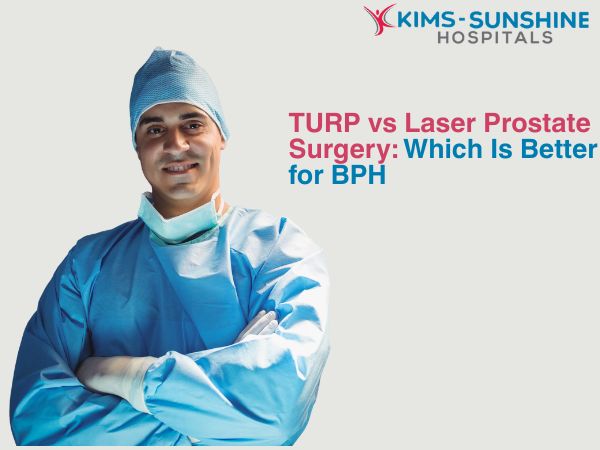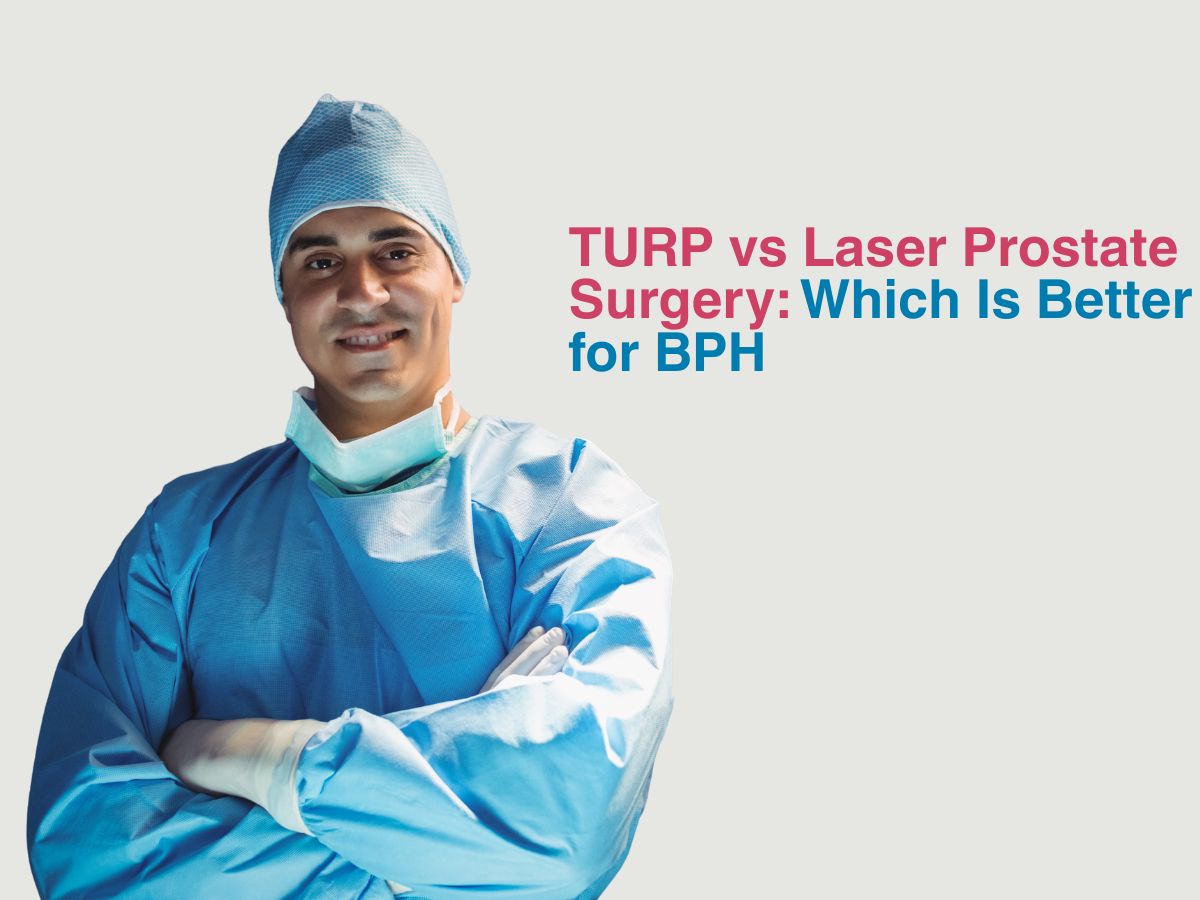
TURP vs Laser Prostate Surgery: Which Is Better for BPH

Benign Prostate Hyperplasia (BPH) is the medical term that is used to describe an enlarged or larger than usual prostate gland. Normally, it is a walnut sized gland that sits right next to the urethra, but when it becomes enlarged (due to various factors), it can press down on the urethra and cause various urinary symptoms which can make life uncomfortable or downright miserable for men, in some cases. Surgical removal of extra prostate tissue is a tried and tested method to help you get rid of the pain and related urinary issues.
TURP vs. Laser Surgery For BPH
Extra prostate tissue can be removed using different ways, but let’s focus on 2 methods
- The TURP procedure involves the insertion of a thin tube called a resectoscope, which is inserted into the urethral opening in the penis. Since it has a camera at one end, the surgeon can visualise how much the prostate tissue is enlarged and how much needs to be removed. Then, a specialized small wire loop (which will have electric current passing through it) is used to remove the extra tissue. The extra excised tissue is then flushed into the urethra using a flushing fluid. The surgeon will then take the rectoscope out and finish flushing completely. Since there is no incision, it is a minimally invasive procedure.
- Laser prostatectomy or laser prostate surgery is a surgical method which involves the use of a resectoscope which is again inserted via the urethral opening in the penis. A thin fibre which can beam laser is also threaded through the resectoscope, which is hollow. The laser beam is powerful enough to vaporise or destroy tissue with very minimal bleeding. Irrigation fluid is used to wash away extra tissue. Finally, a catheter tube is allowed to remain in the bladder, so that blood clots and excised tissue can be thrown out along with urine.
Pros And Cons of TURP For Enlarged Prostate
The main pros for TURP include no incision and removal of tissue if the prostate is highly enlarged. The cons include- longer catheterization times and the possibility of the surgeon not being able to remove all extra tissue due to profuse bleeding, during surgery. If the surgeon is not able to flush out blood and tissue fast enough, then they may not be able to get all of the extra tissue out either. But, TURP is much more economical and can work in almost all cases of prostate hyperplasia. There is also higher risk of developing complications after surgery is done.
The benefits of laser prostate surgery include lesser bleeding and reduced catheterization time after surgery. But, laser surgery is not recommended if the prostate is highly enlarged, if you have an aggressive cancer or if you have other comorbid conditions. Some laser prostate surgery complications include bleeding after the procedure, but you generally heal faster, when compared to TURP. Laser prostatectomy can be much more expensive too.
Conclusion
The success rate of laser vs TURP surgery for BPH has also been well studied. Since TURP is a very well established method and can be used in all instances, its success rates can be more than 90% after surgery. Patients do take longer to heal but don’t have any long term issues afterwards, for as long as 15 years after getting it done. Laser prostate surgery on the other hand is not ideal for use in every instance and the success rate is a little lower (80% or so). Laser surgery is a good option for men who take blood thinners, but the procedure may not hold and a repeat surgery may become necessary in some instances. Which procedure you will get done is hence dependent on how much your prostate has enlarged, your health and how severe your symptoms are.






